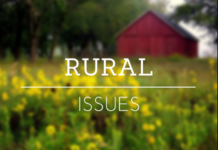Tornados, thunderstorms with high winds and lightning and downpours are common this time of year in Kansas. The best we can do is to use the Boy Scout motto and BE PREPARED with an emergency kit and family escape plan.
When the storm is over, if you and your family were prepared and came through in good shape that is a blessing. But, there is property damage. Utilities are out. Are the roads blocked? Maybe there are flood waters to deal with. You’re in the aftermath and there are still risks to your safety.
Here is Information from the National Oceanic and Atmospheric Administration that provides excellent information.
Knowing what to do in the wake of a severe storm or disaster may be just as important to you and your family as taking proper actions ahead of the storm. A study of injuries after a tornado in Marion, Illinois, showed that 50 percent of the tornado related injuries were suffered during rescue attempts, cleanup, and other post tornado activities. Nearly a third of the injuries resulted from stepping on nails. Any storm that damages power lines, gas lines, or electrical systems, puts you at risk due to fire, electrocution, or an explosion.
Here are just a few safety tips:
Be aware of hazards from exposed nails and broken glass.
*Do not touch downed power lines or objects in contact with downed lines. Report electrical hazards to the police and the utility company.
*If it is dark when you are inspecting your home, use a flashlight rather than a candle or torch to avoid the risk of fire or explosion in a damaged home.
*If you see frayed wiring or sparks, or if there is an odor of something burning, you should immediately shut off the electrical system at the main circuit breaker if you have not done so already.
*If you smell gas or suspect a leak, turn off the main gas valve, open all windows, and leave the house immediately. Notify the gas company, the police or fire departments, or State Fire Marshal’s office, and do not turn on the lights, light matches, smoke, or do anything that could cause a spark. Do not return to your house until you are told it is safe to do so.
*For more information, visit the Centers for Disease and Prevention. They have a wealth of information about what to do in the aftermath of all sorts of events: like tornadoes, floods, hurricanes, and many more.
By: Susan Jackson




